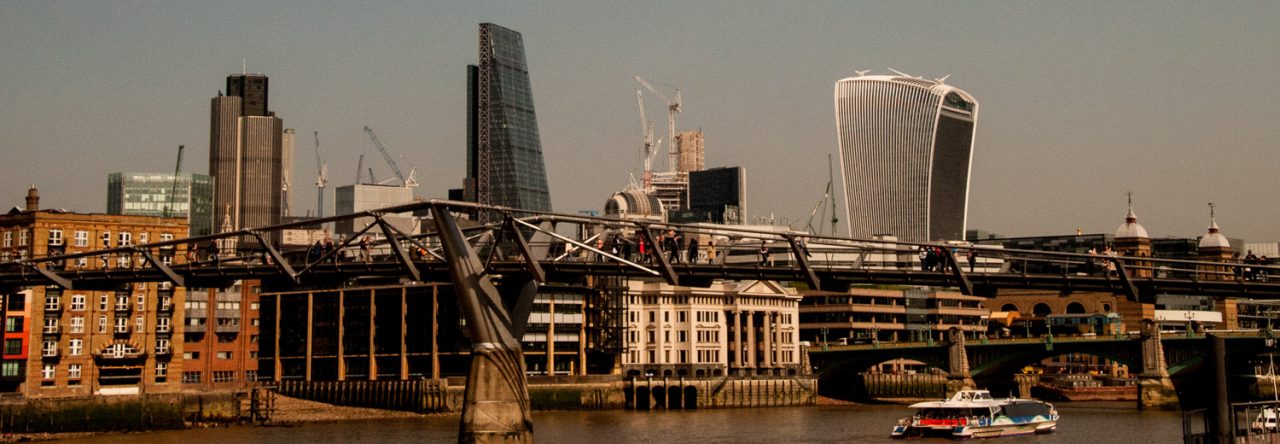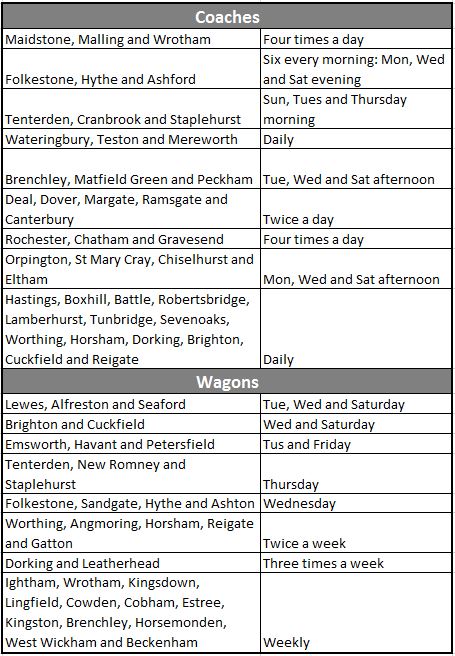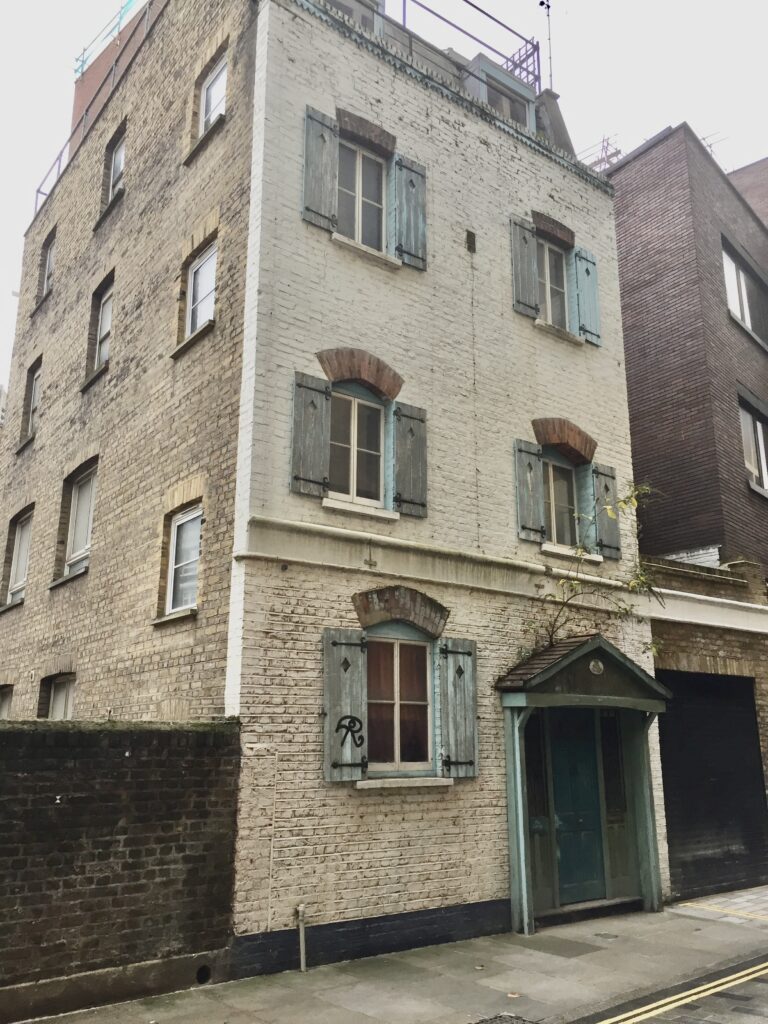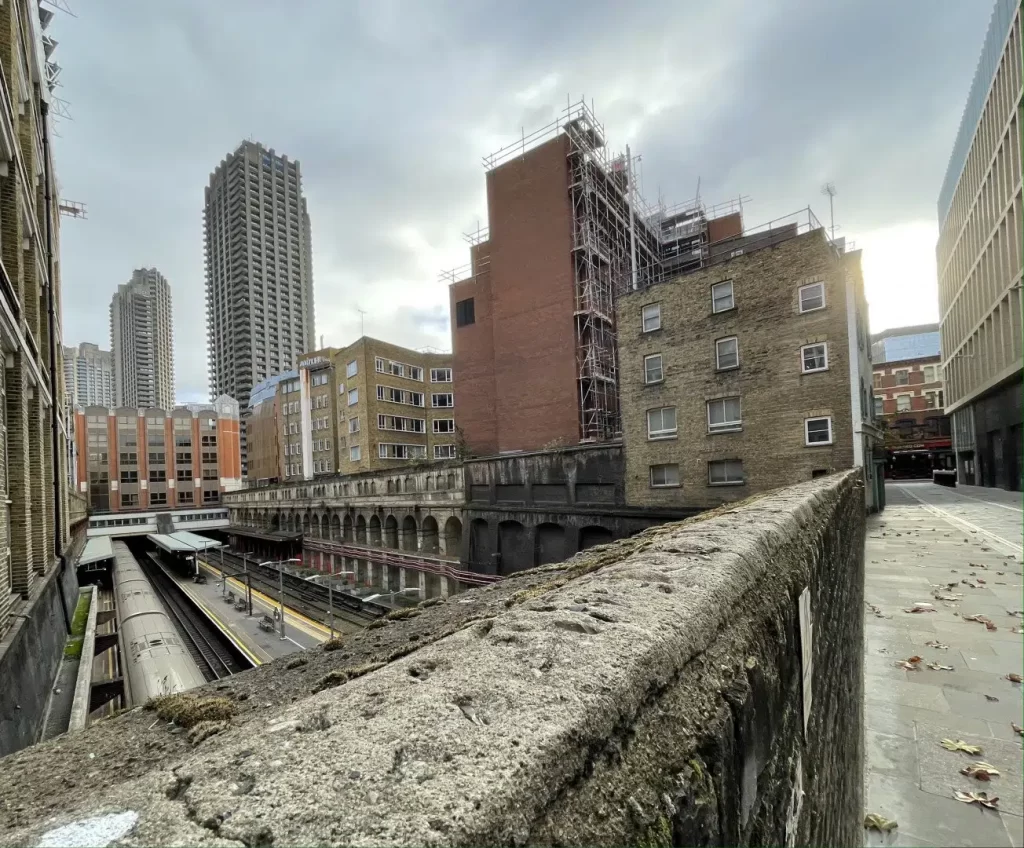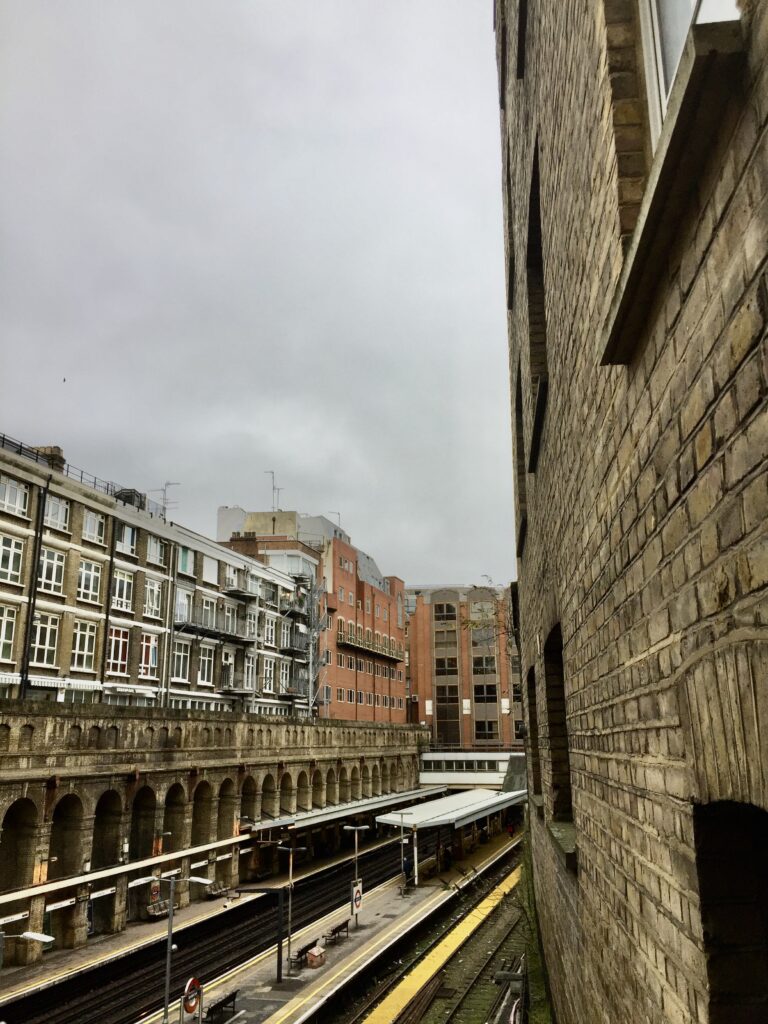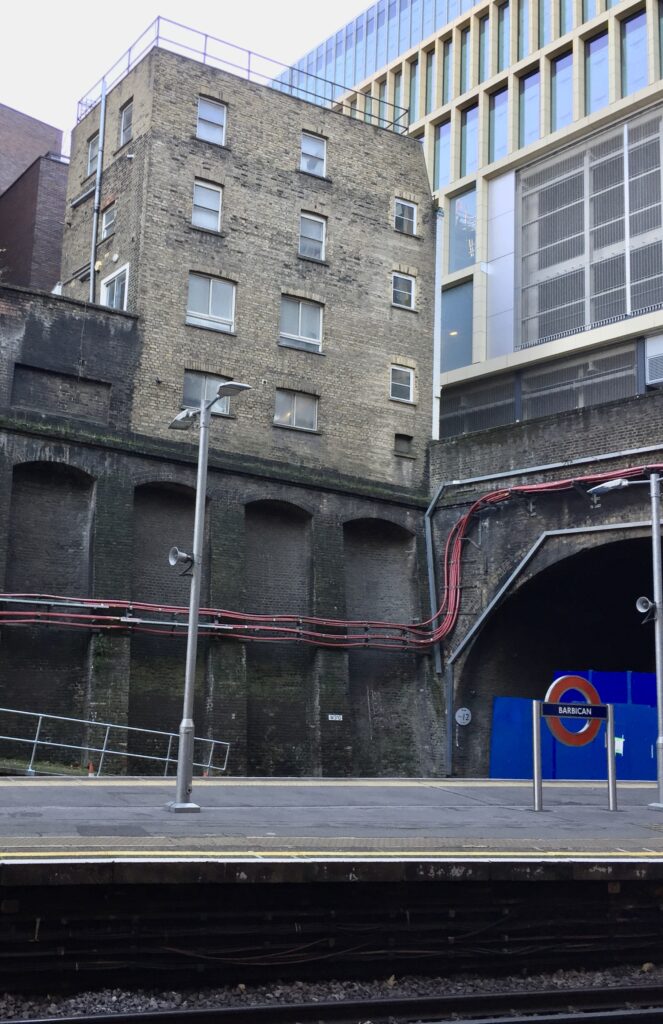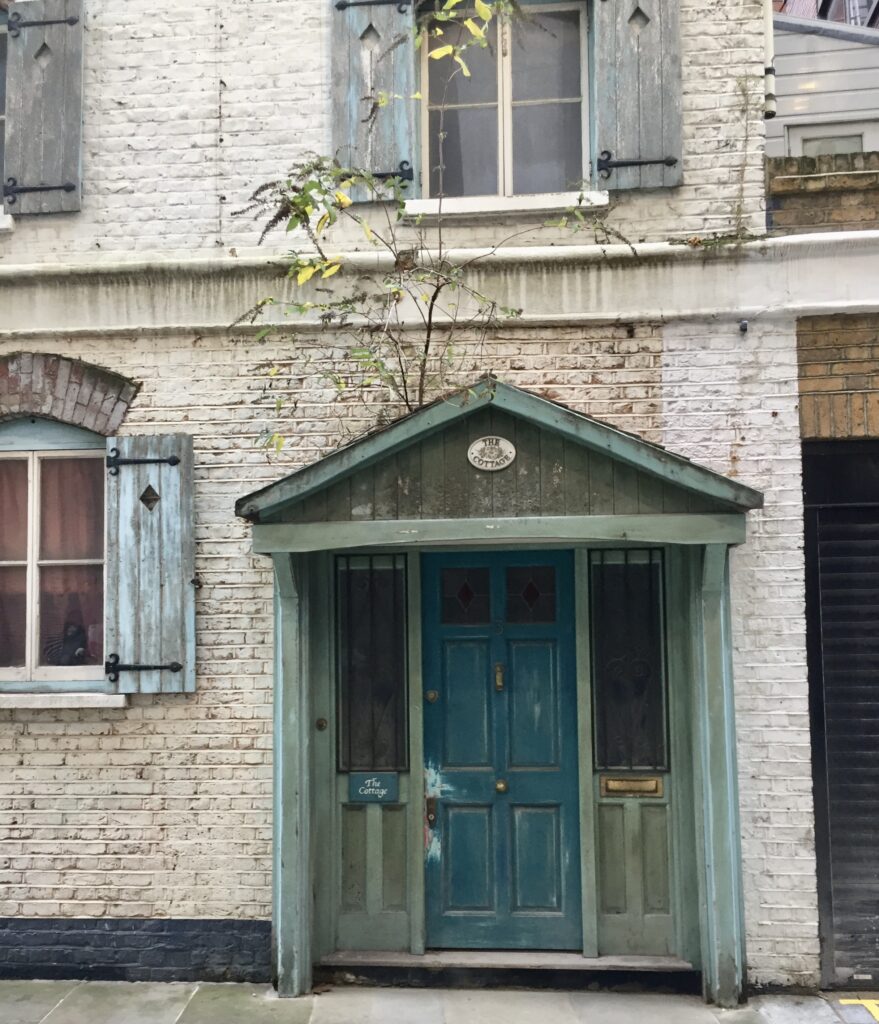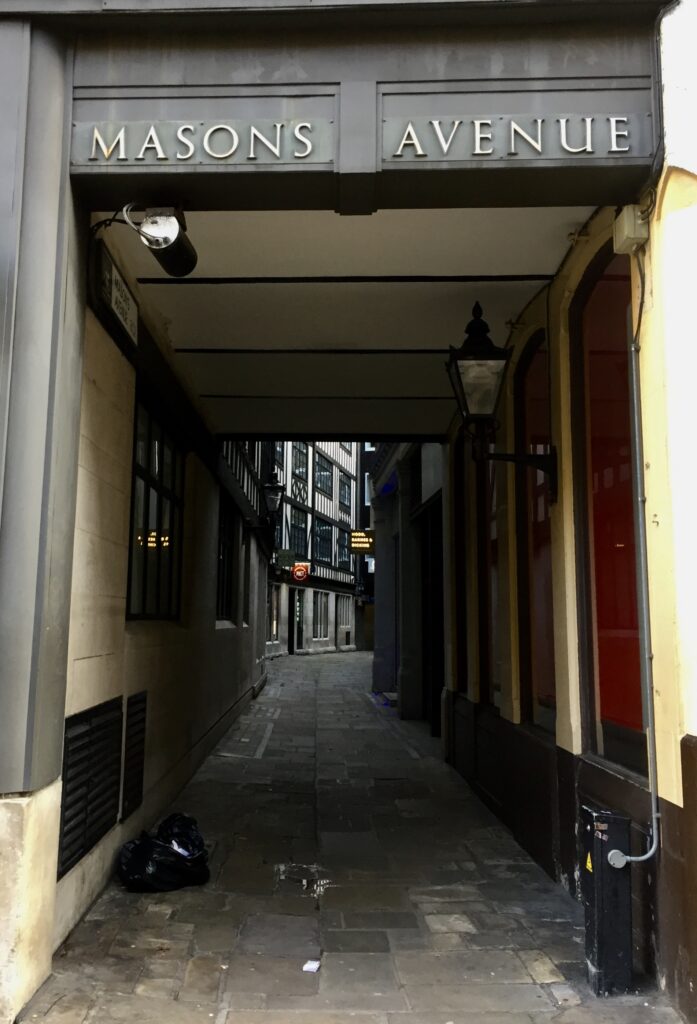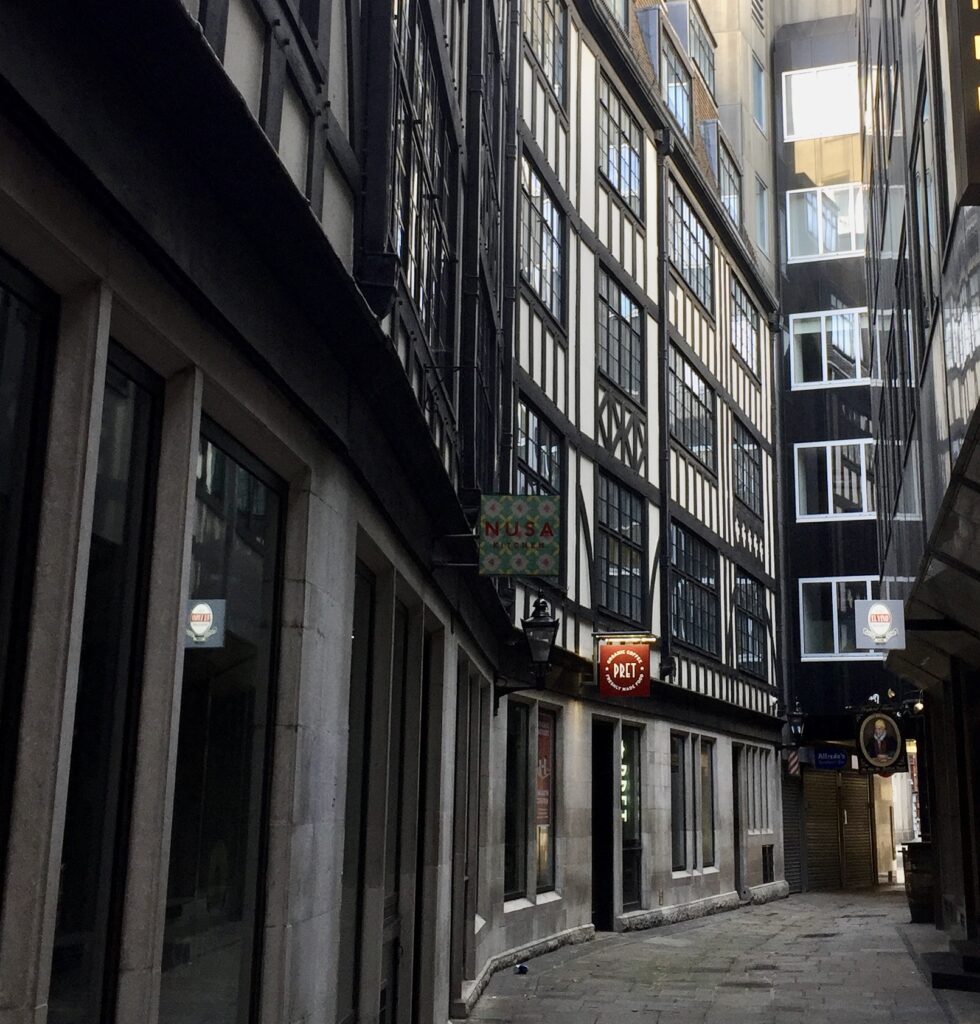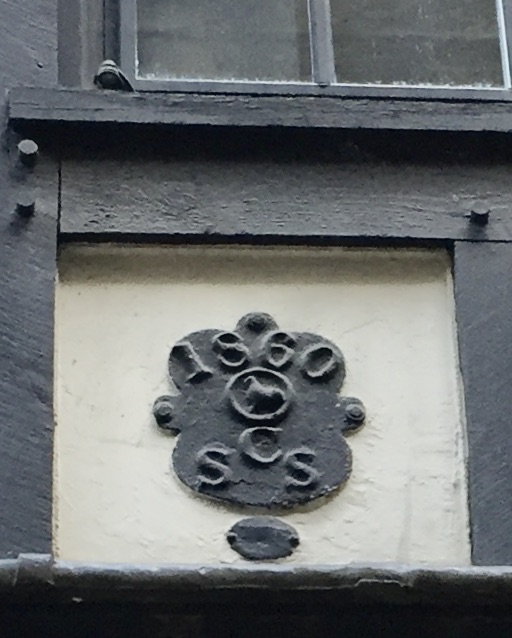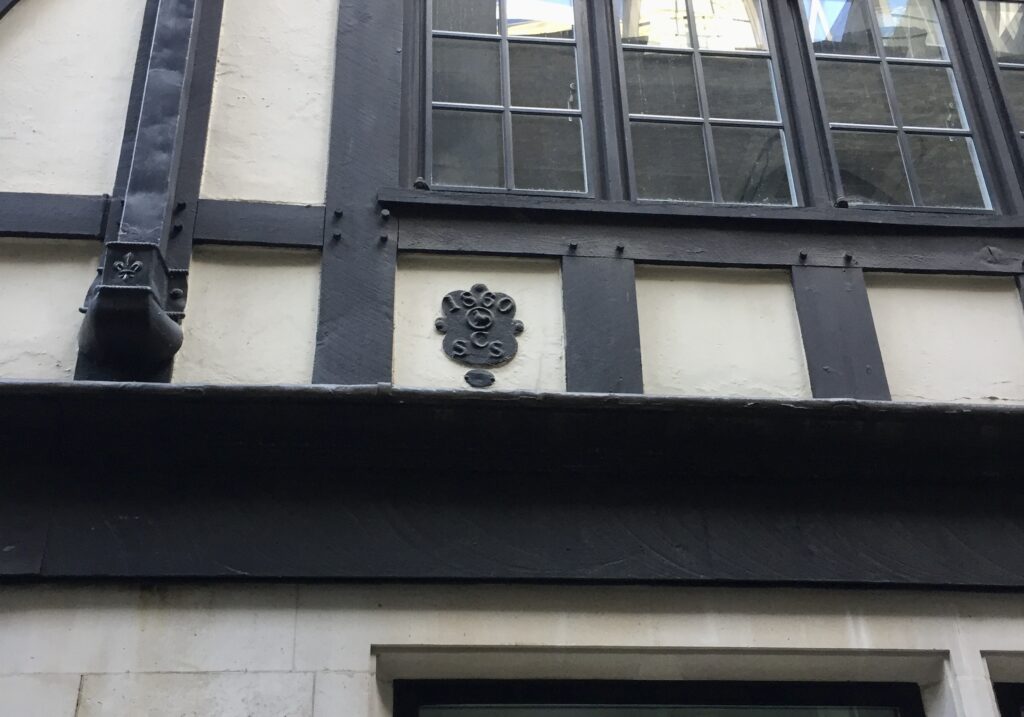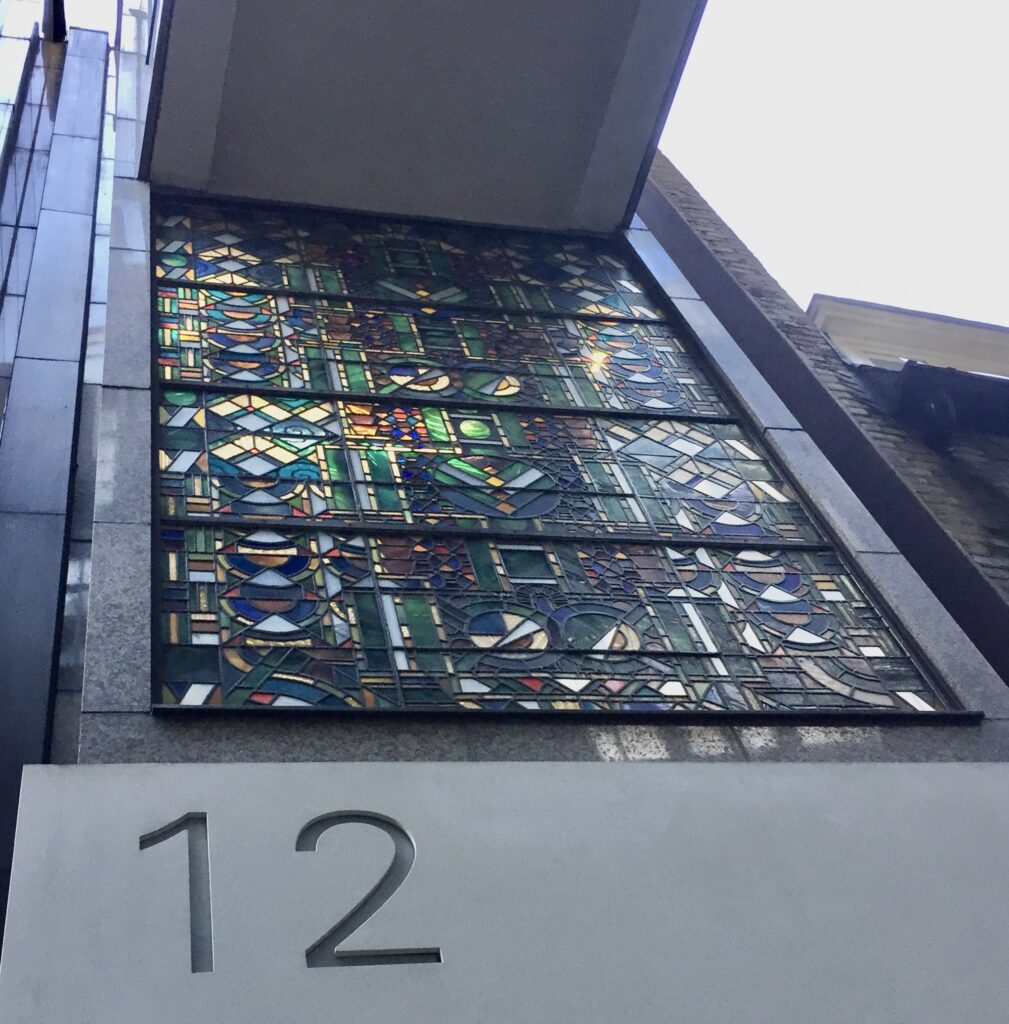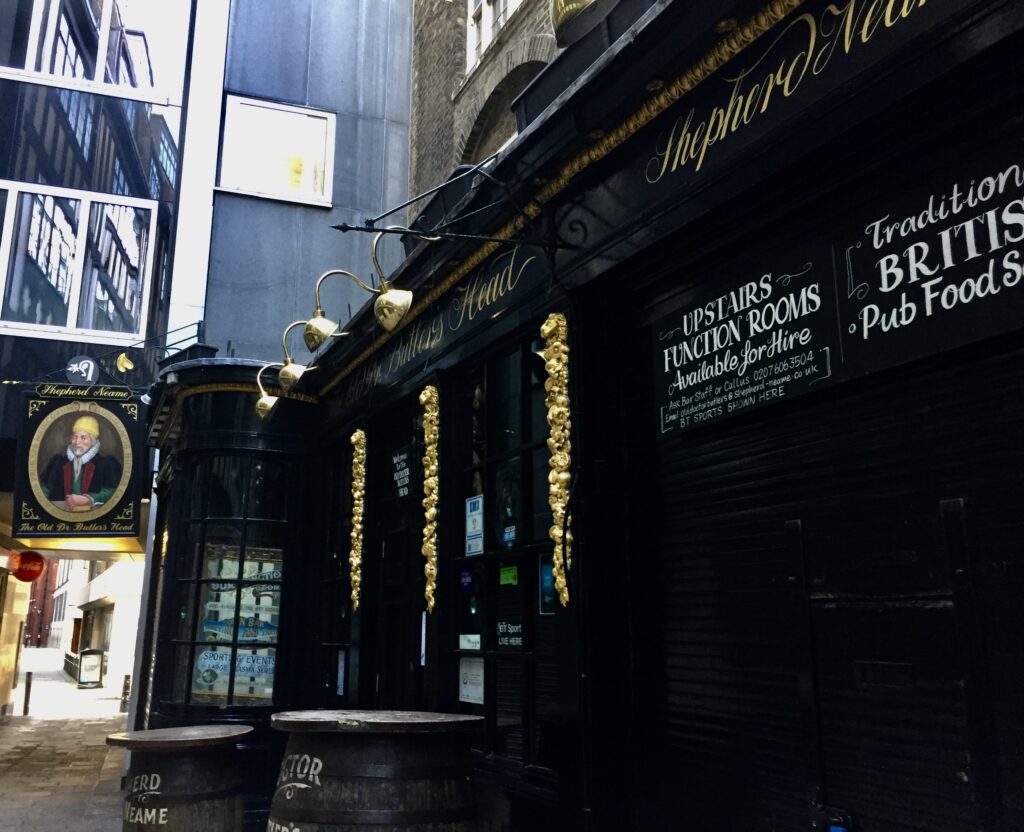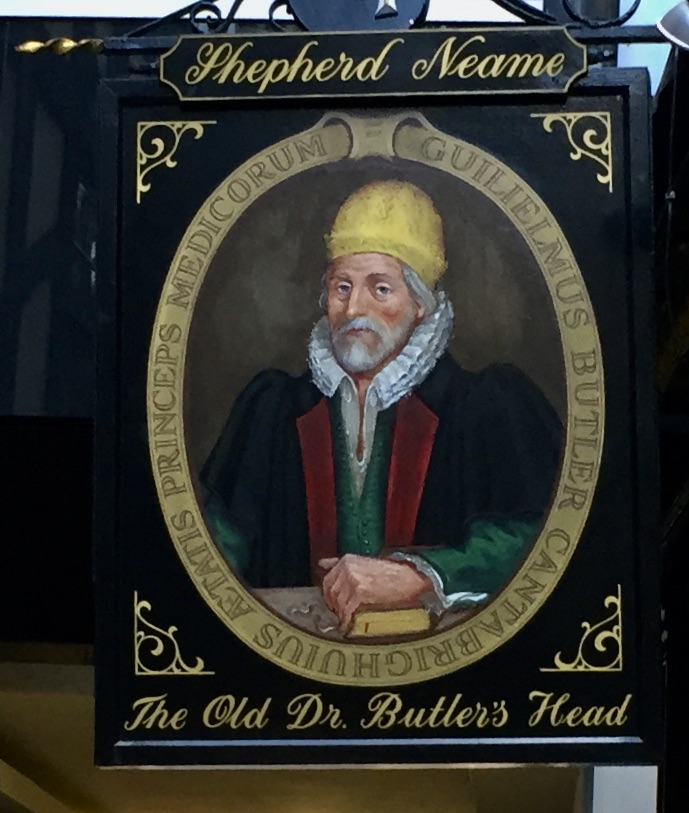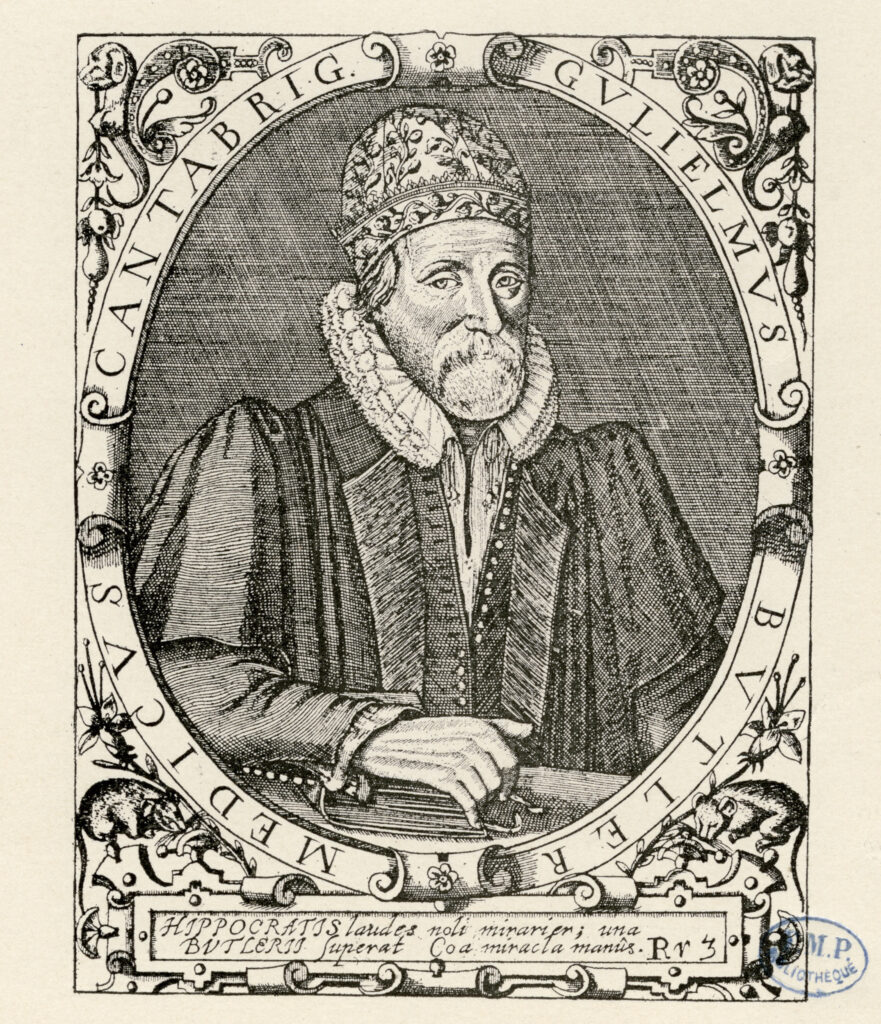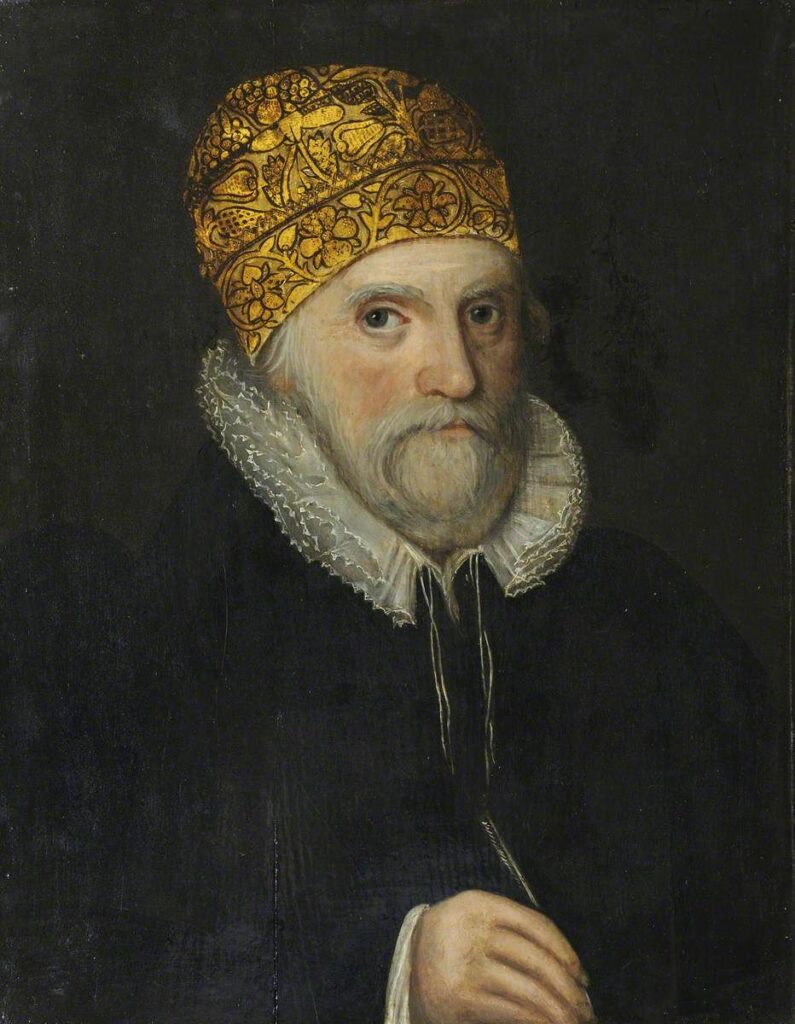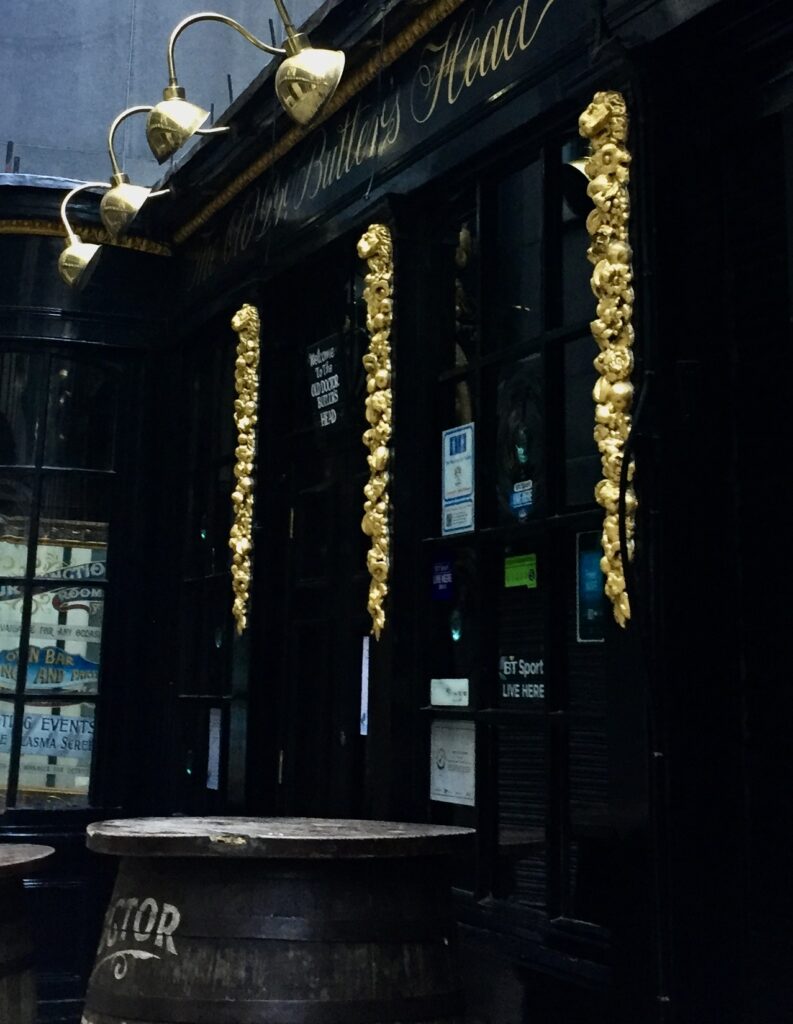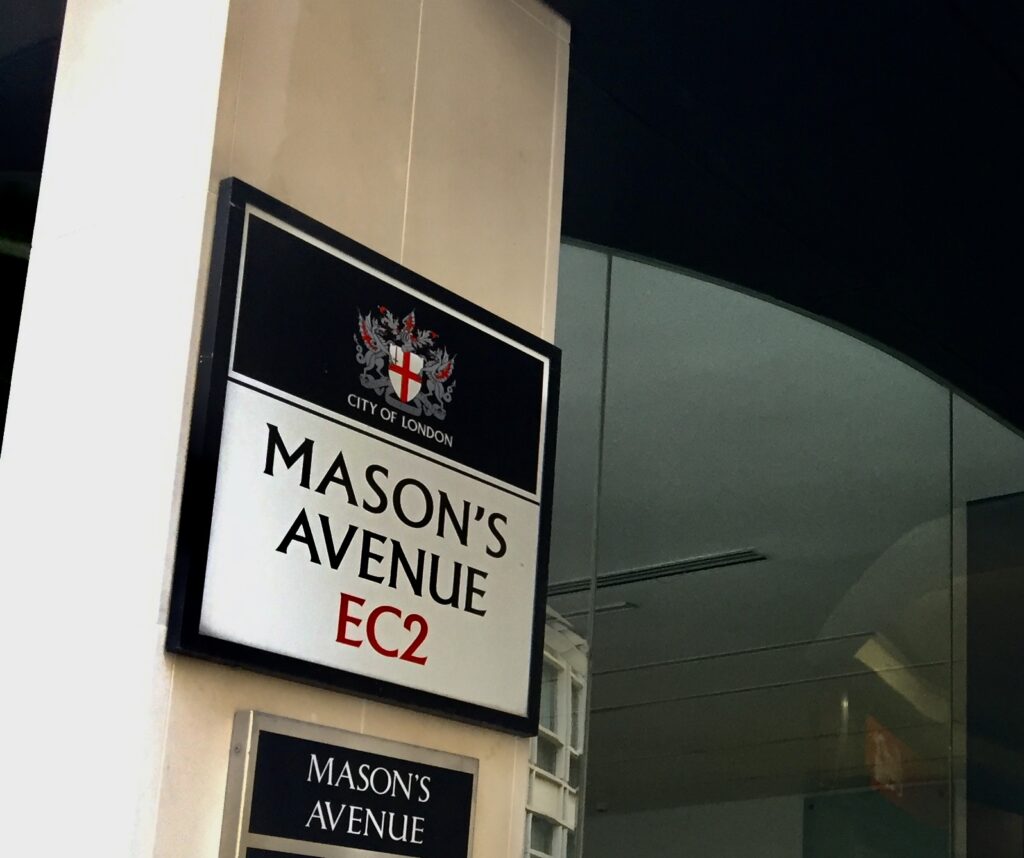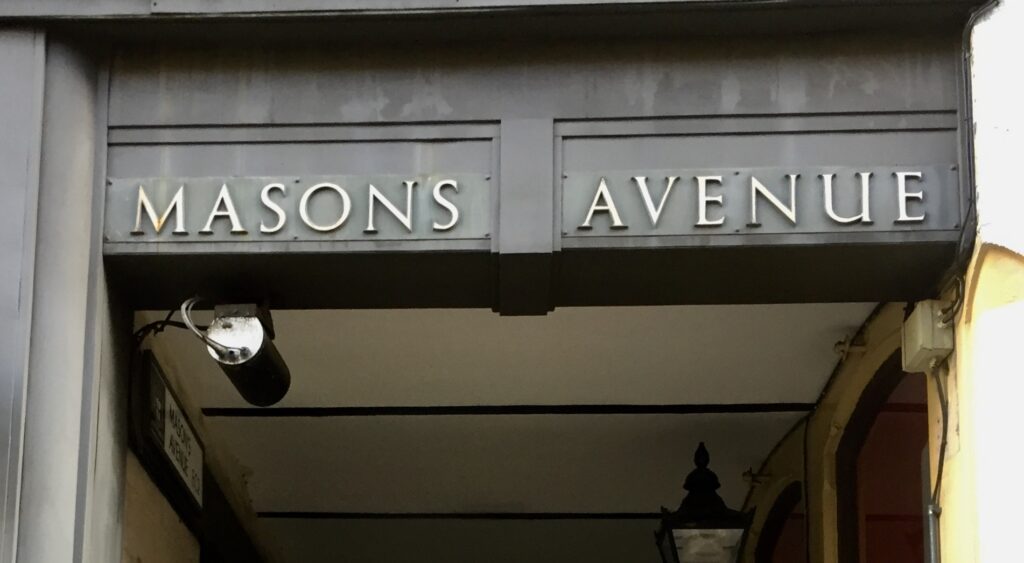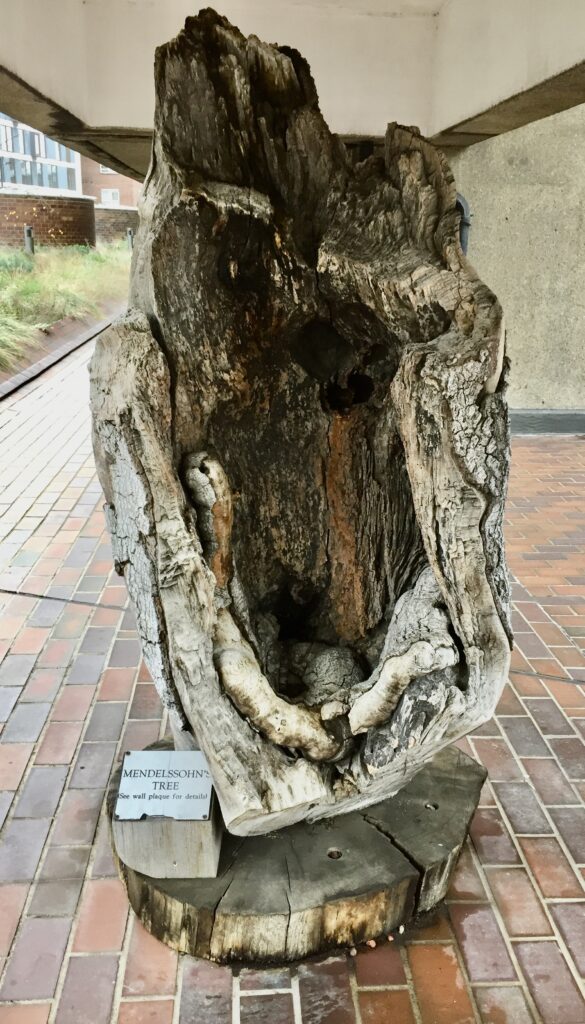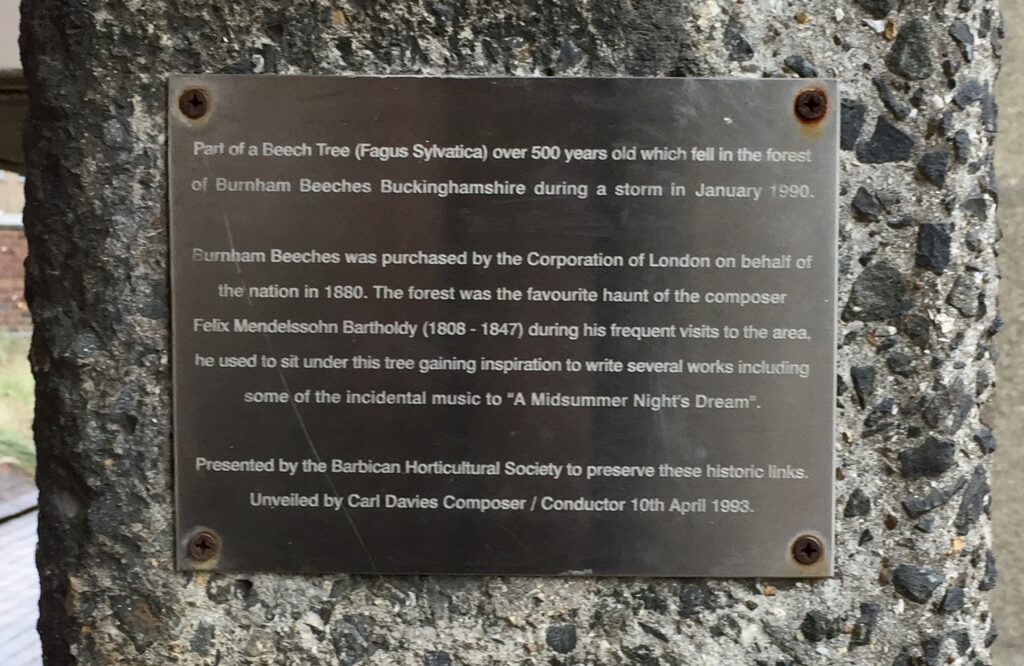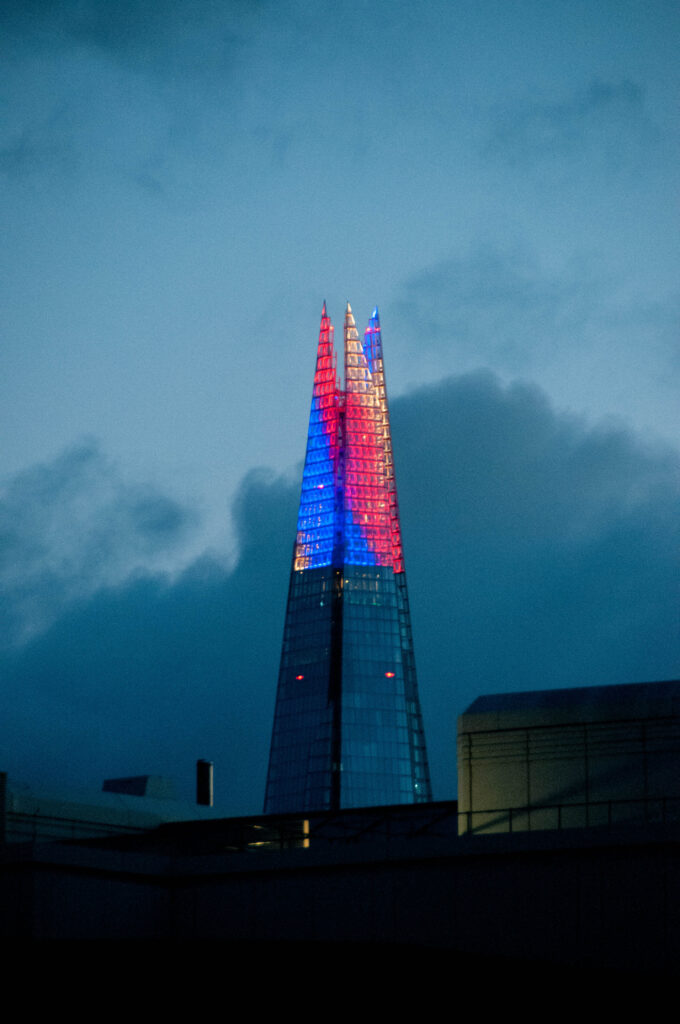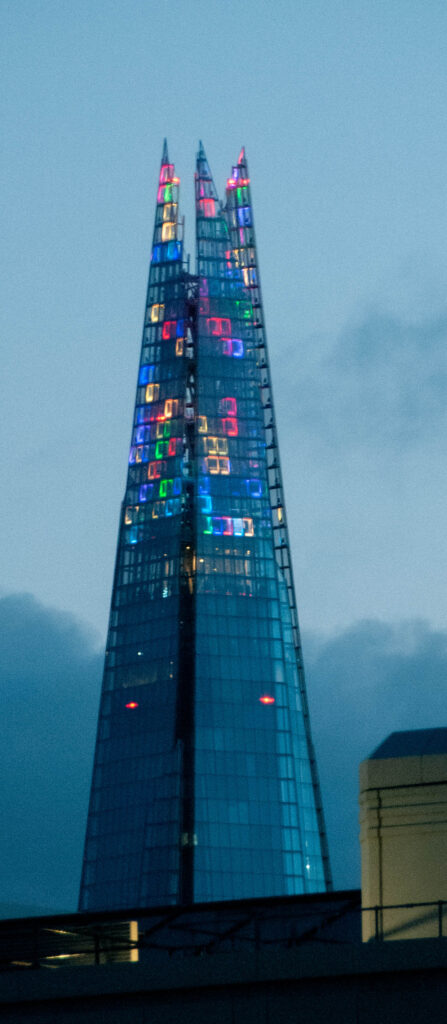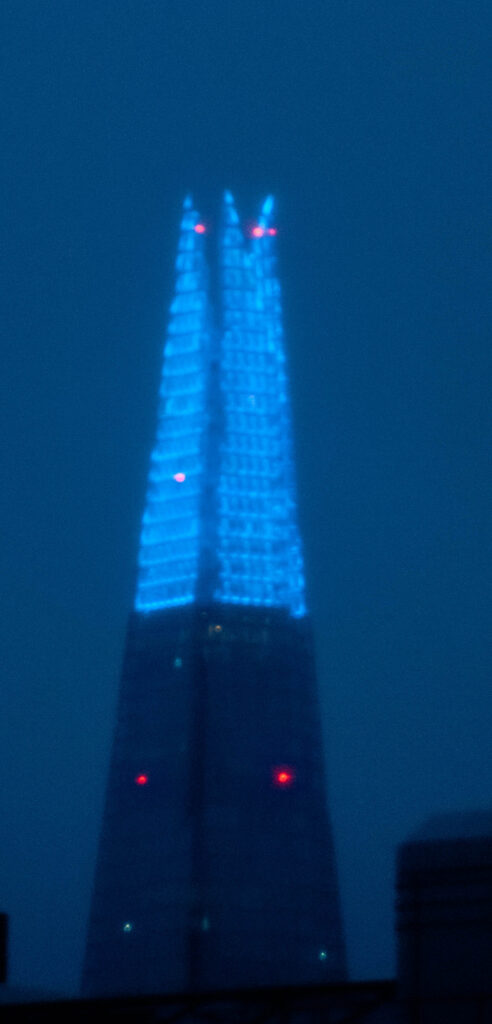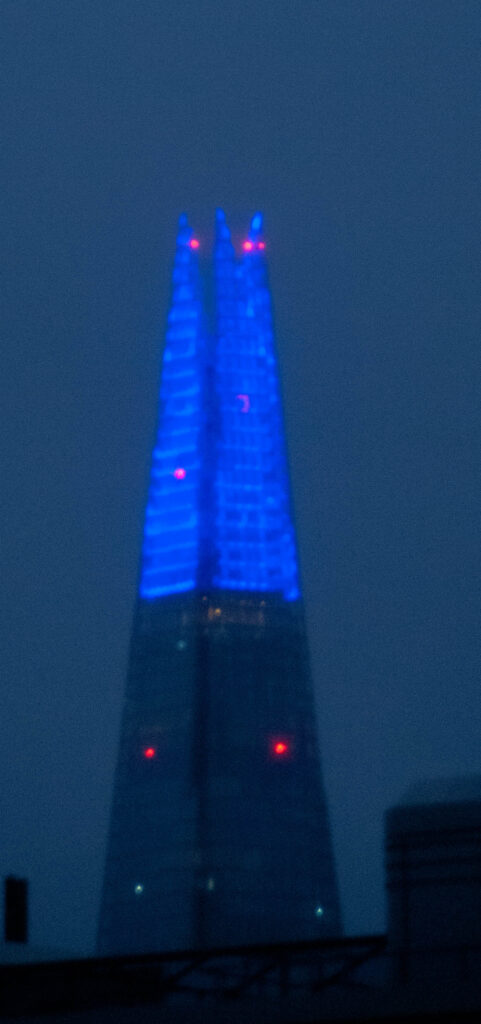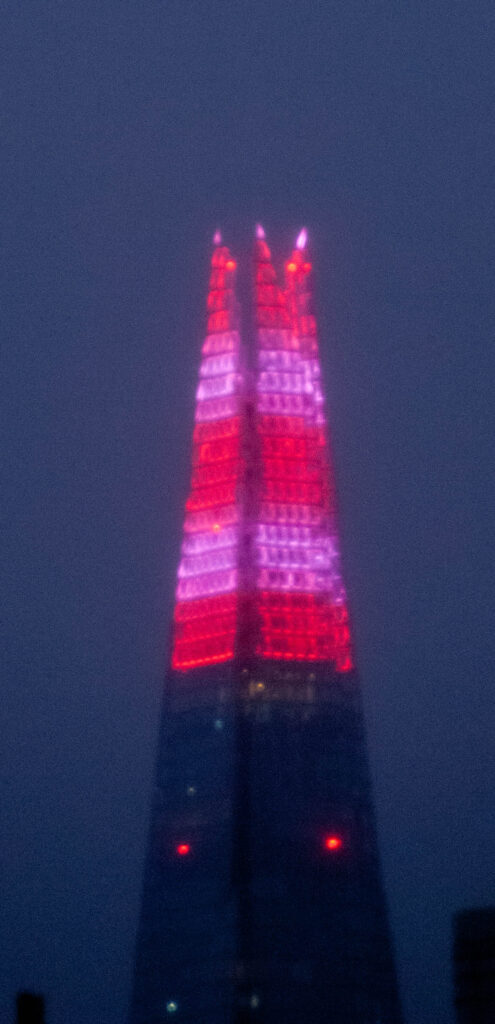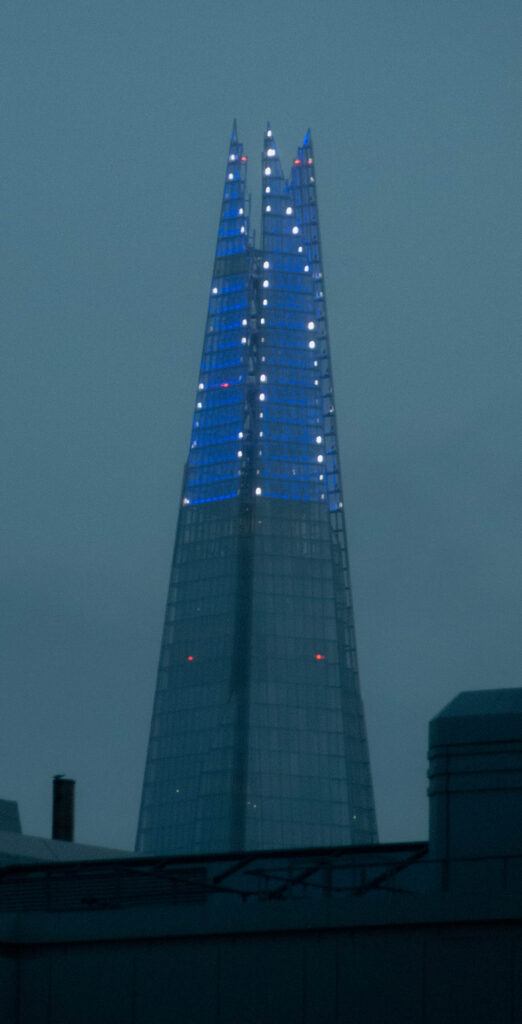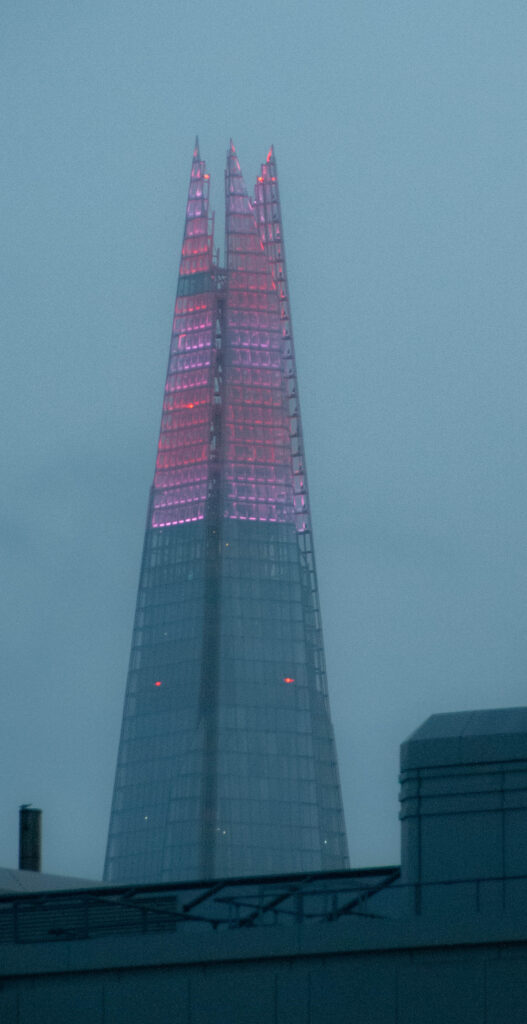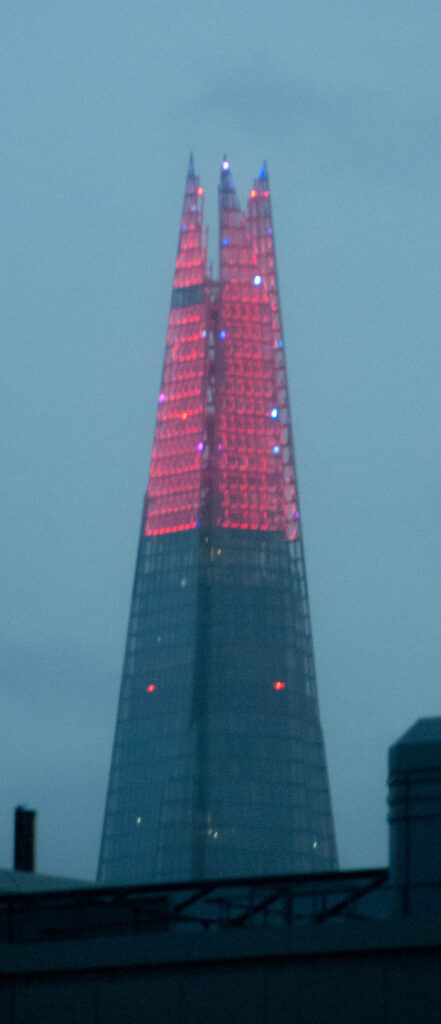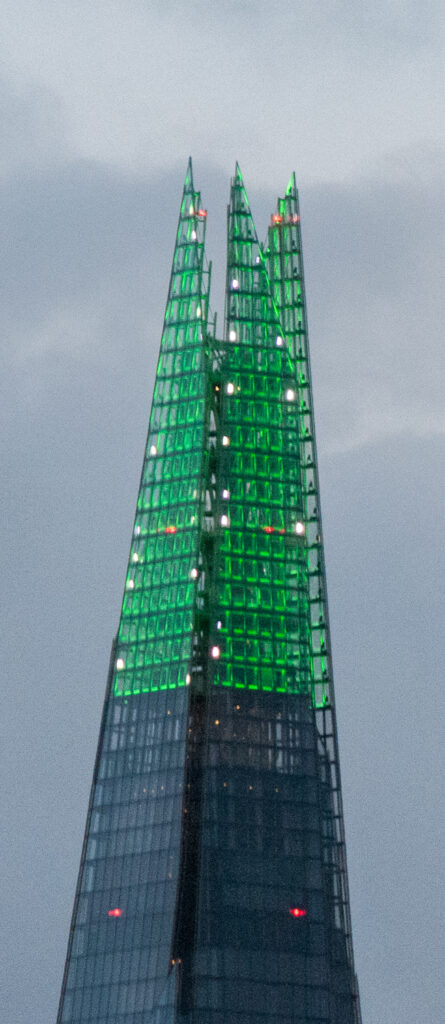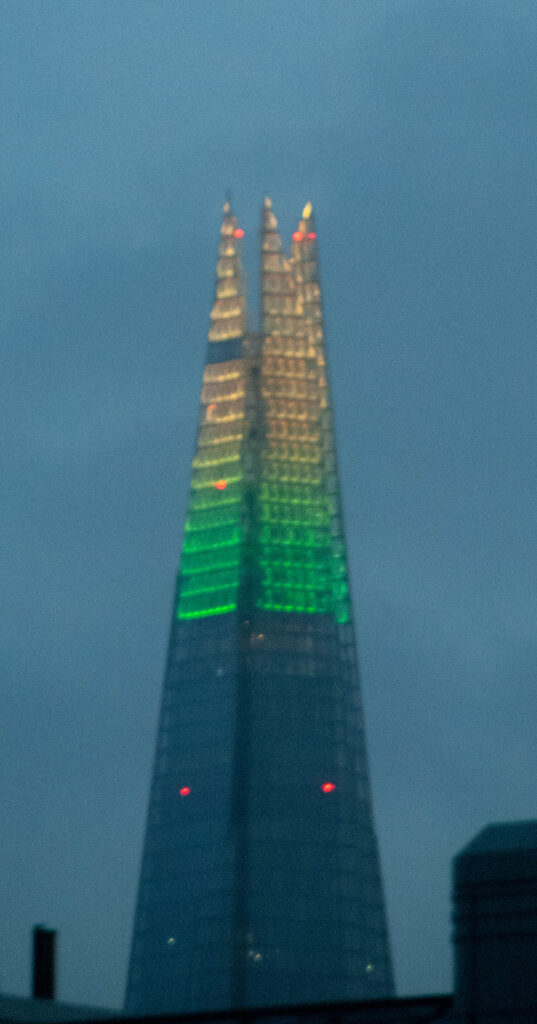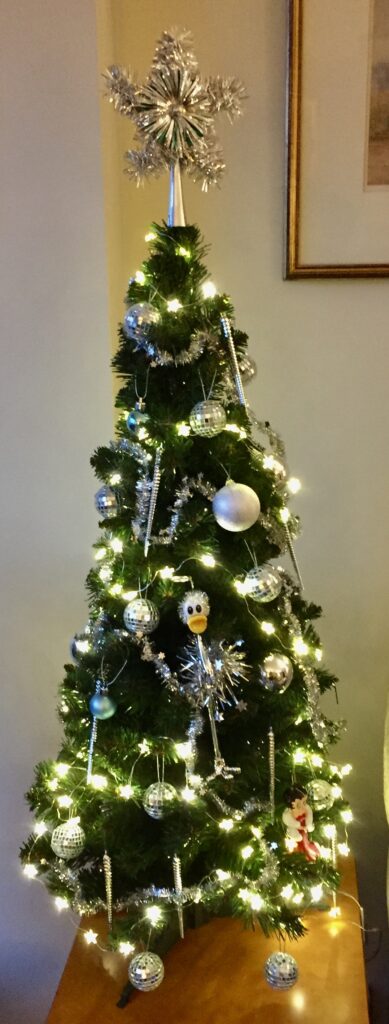City pubs often have a rather interesting history so I thought I’d do a bit of research on some of my favourites, starting with the Hoop & Grapes on Aldgate High Street (EC3N 1AL).
Here it is in 1961 when, before or after a beer, you could also get your eyes tested at the adjacent optician and acquire teeth at Supreme Denture Service Ltd. If your new teeth looked good you could have a picture taken of your happy smile at the Regal Studios …
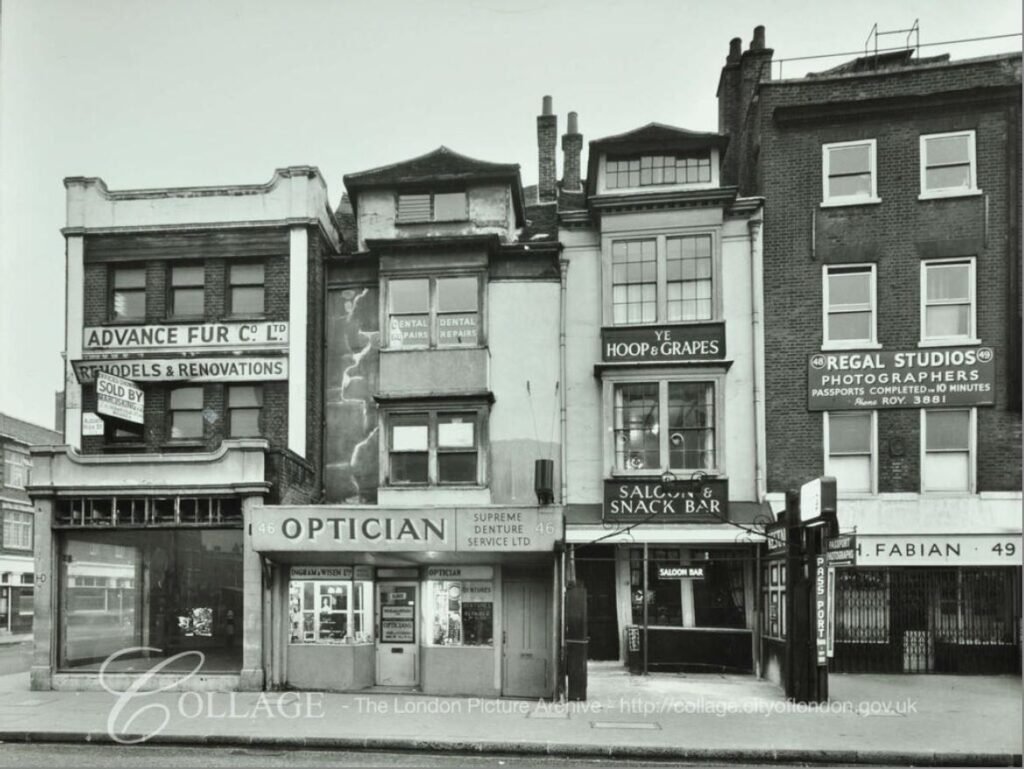
The Hoop & Grapes is the oldest licensed house in the City, built in 1593 and originally called The Castle, then the Angel & Crown, then Christopher Hills, finally becoming the Hoop & Grapes in the nineteen twenties.
Here it is today …
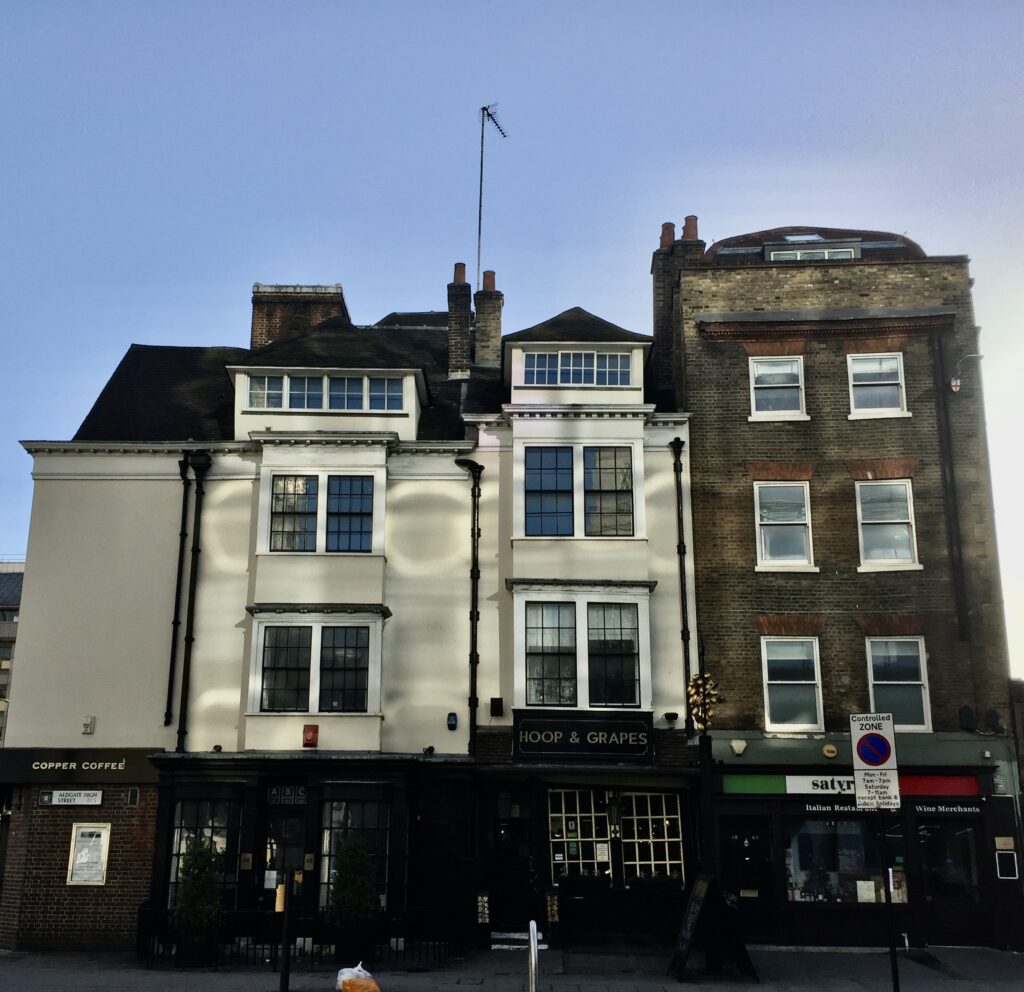
The pub has been described as being like a skinny waif sat between two fat people on a bus.
The name Hoop & Grapes advertised the fact that you could buy both beer and wine there. The first impression, when you turn your back on the traffic to enter, is of the appealingly crooked frontage with sash windows fitted in the seventeen twenties at eccentric angles …
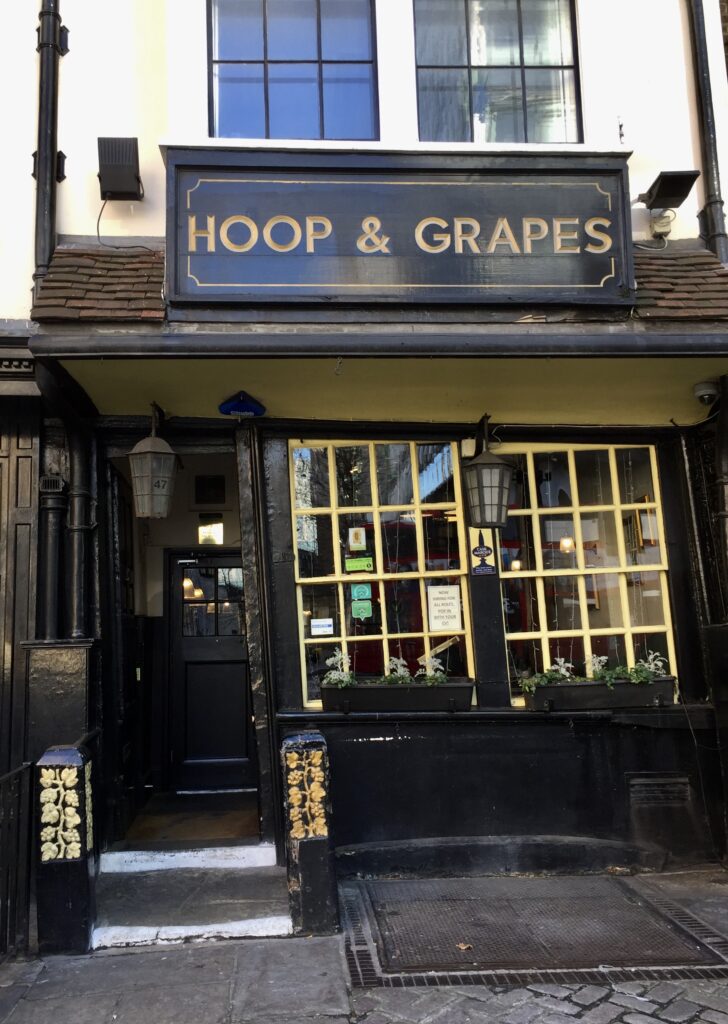
Two 18th century oak posts guard the entrance, each with primitive designs of vines incised upon them …
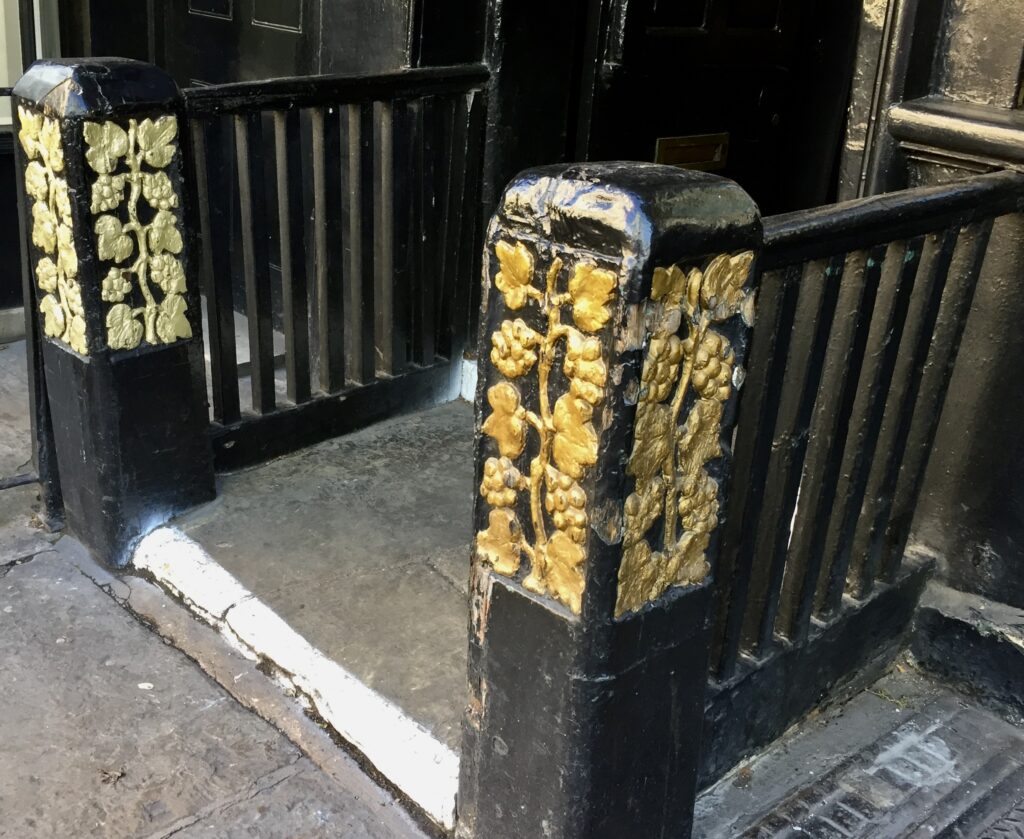
There are two old parish boundary markers …
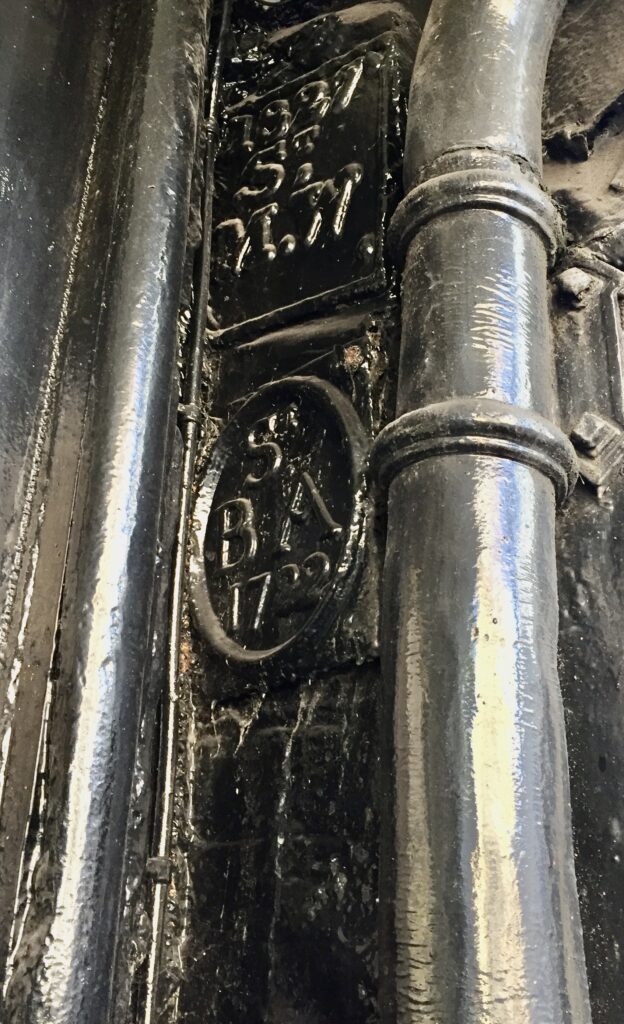
The top one, dated 1837, is for the parish of St Mary’s Whitechapel (lost in the Blitz) and the lower, from 1722, refers to St Botolph Without Aldgate (still thriving across the road).
If you are interested in how parishes marked out their territories I have written two blogs on the subject : Bombs and Boundaries and City Parishes and their Boundaries.
The very old door still bears traces of when it was the entrance to the, posher, ‘Saloon’ Bar …
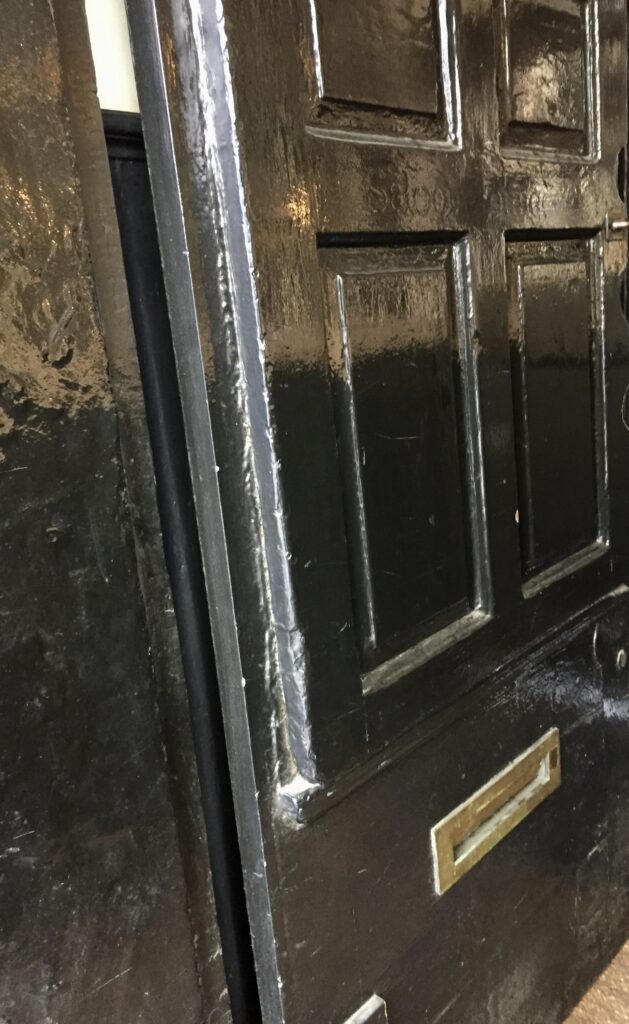
I like the old lantern with the street number on it …

You can read more about the site and medieval Aldgate here.
Incidentally, there is another Hoop and Grapes on Farringdon High Street …
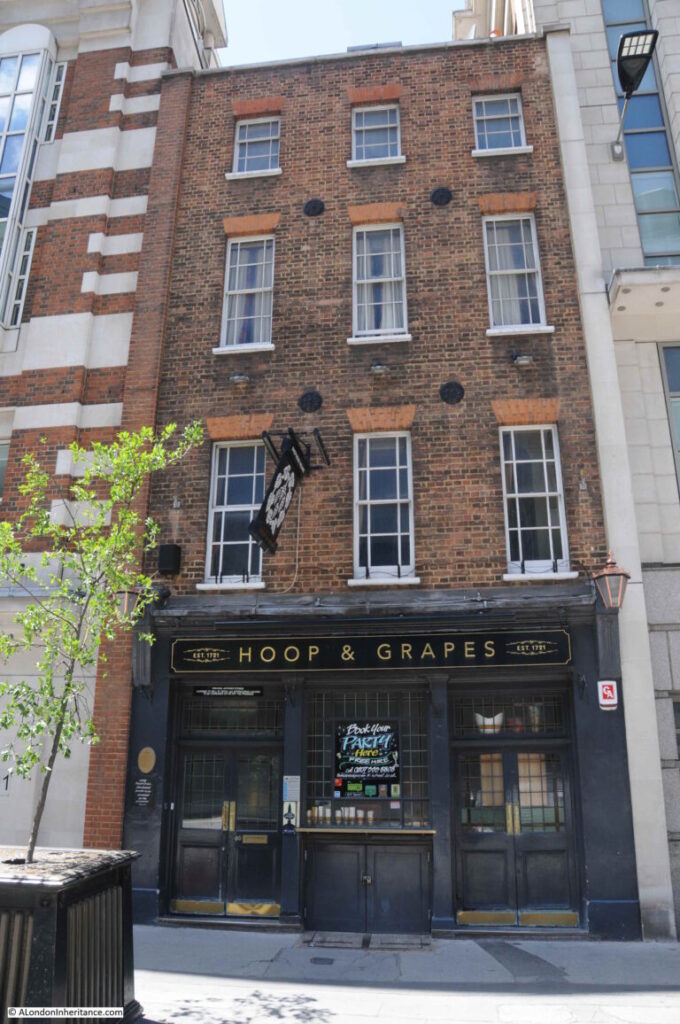
It once had had a special licence for many years, allowing the pub to open between two and five in the morning for the convenience of printers who worked in nearby Fleet Street. This only allowed the pub to serve those working in the newspaper trade, and other trades which involved night or early morning working, such as London’s markets. I can personally attest to the fact that the pubs that held these special licences often were not too careful in checking that their customers worked in the allowed trades!
It was built in 1721 on part of the historic burial grounds of St Bride’s Church. As an inn, it gained notoriety as a location for illegitimate Fleet Weddings.
In the 1990s, it underwent several changes and was eventually closed down and scheduled for demolition. However, as the last surviving pub with a history of Fleet weddings, it was given a stay of execution and became a Grade II listed building …
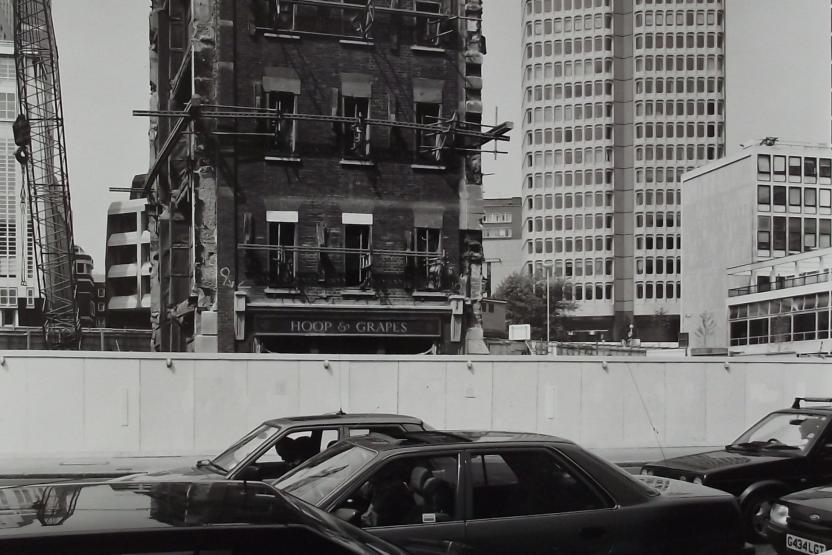
During the renovation works burial remains from St Bride’s Church were discovered and many bodies found there were moved into the British Museum.
Last year I briefly visited The George Inn in Southwark …
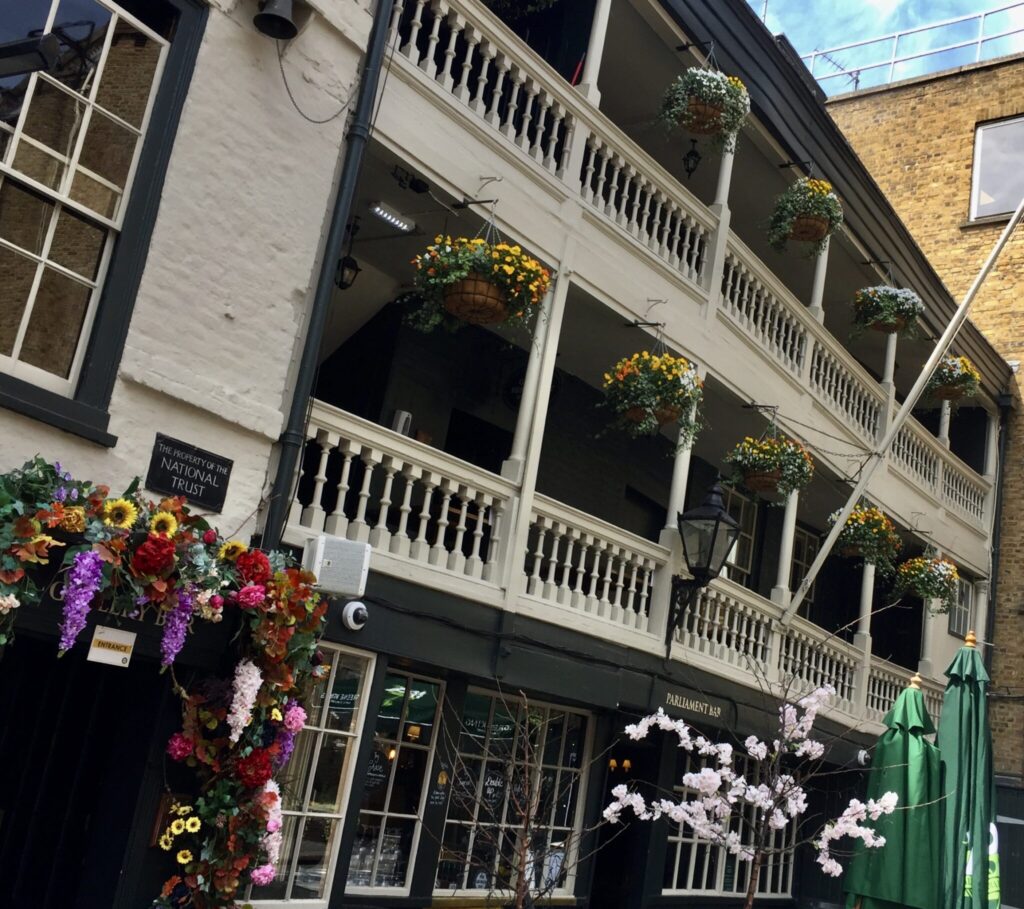
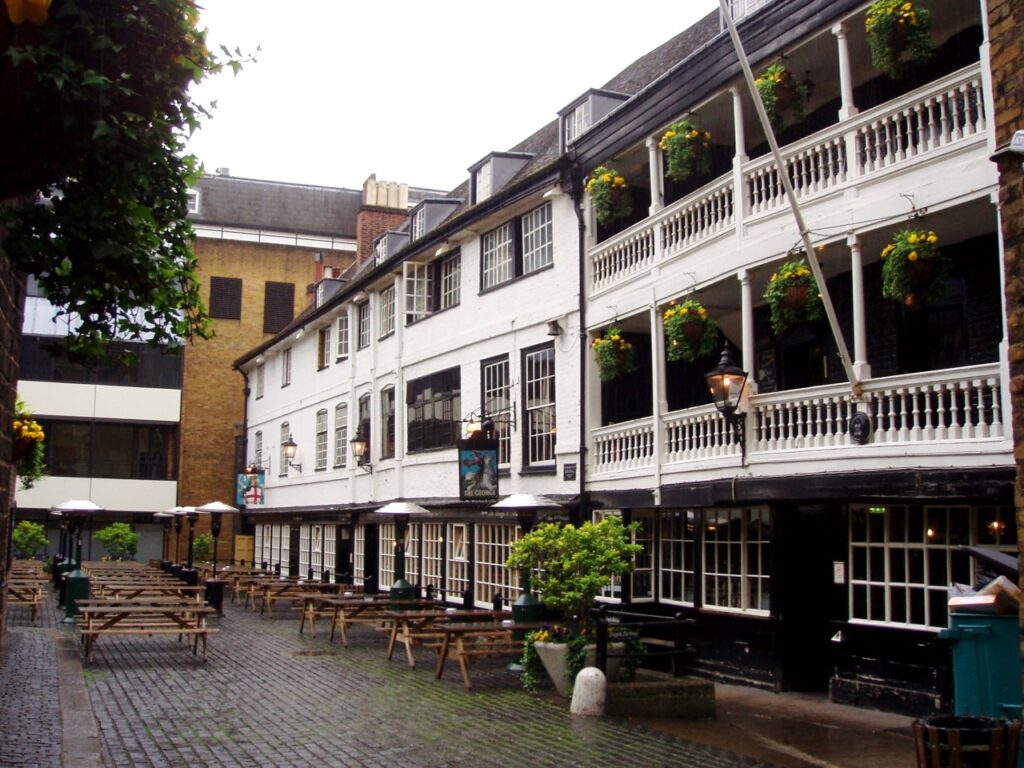
The George is a very old Inn, dating back to at least the 16th century. It was mentioned by Stowe in 1598 as one of the ‘fair inns of London’ and was rebuilt in 1676 after a serious fire. For many years it was owned by the trustees of Guy’s Hospital, which was on the eastern boundary of the original George Inn – the building we see today is a small part of the original inn and the associated buildings to support the coaching business.
Catching a coach from one of the Inns in Southwark was almost the equivalent of walking across London Bridge today and catching a train at London Bridge Station. And there were many inns to choose from as this old print illustrates …
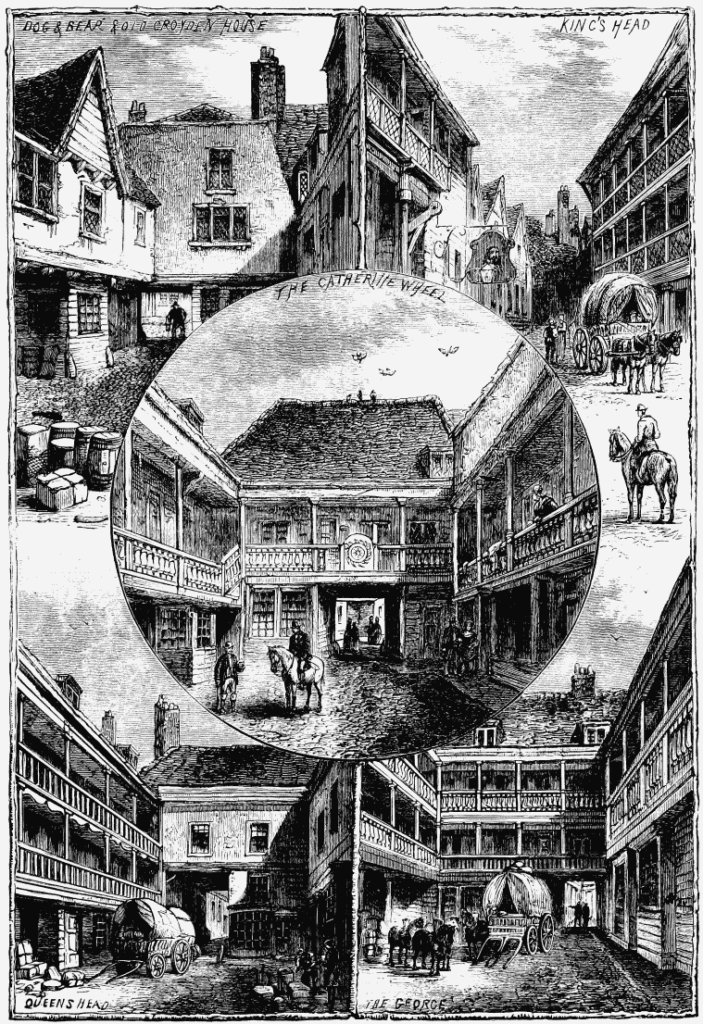
Coaches from Southwark served numerous destinations in the counties of Kent, Sussex and Hampshire and in 1809 W.S. Scholefield, who was running the George at the time, published a list of the destinations from the inn, and their frequency:
Gradually these enterprises went into decline as the railways put them out of business.
Here’s what Charles Dickens had to say about the old inns in his first novel The Pickwick Papers:
There are in London, several old inns, once the head-quarters of celebrated coaches in the days when coaches performed their journeys in a graver and more solemn manner than they do in these times; but which have now degenerated into little more than the abiding and booking places of country wagons … In the Borough especially there still remain some half-dozen old inns, which have preserved their external features unchanged, and which have escaped alike the rage for public improvement and the encroachments of private speculation. Great, rambling, queer old places they are, with galleries, and passages, and staircases wide enough and antiquated enough to furnish materials for a hundred ghost stories, supposing we should ever be reduced to the lamentable necessity of inventing any.
The George in 1858 …
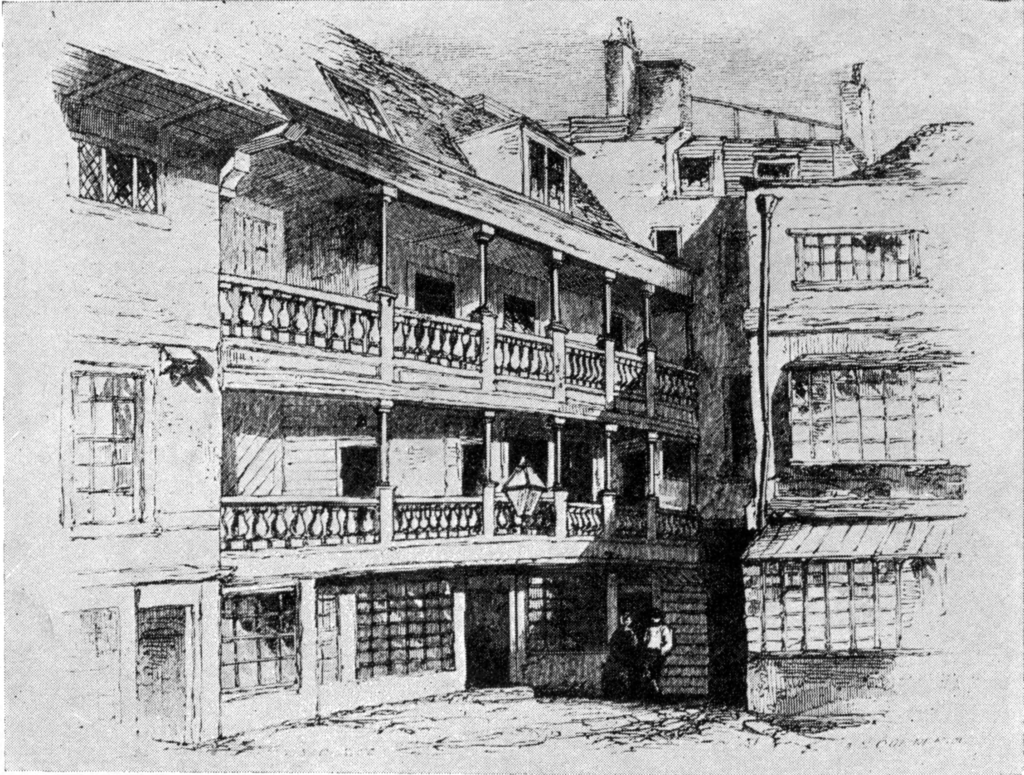
In 1874, Guy’s Hospital sold the George Inn to the Great Northern Railway. The coming of the railways had seen a rapid decline in travel by horse and coach, so the sale of the inn to the GNR, who used the site as a receiving station for goods to be transported on their rail network, was in many ways a logical continuation of the main transport function of the inn.
The following photo shows the courtyard of the George, looking towards Borough High Street, with a sign above the entrance to the GNR offices …
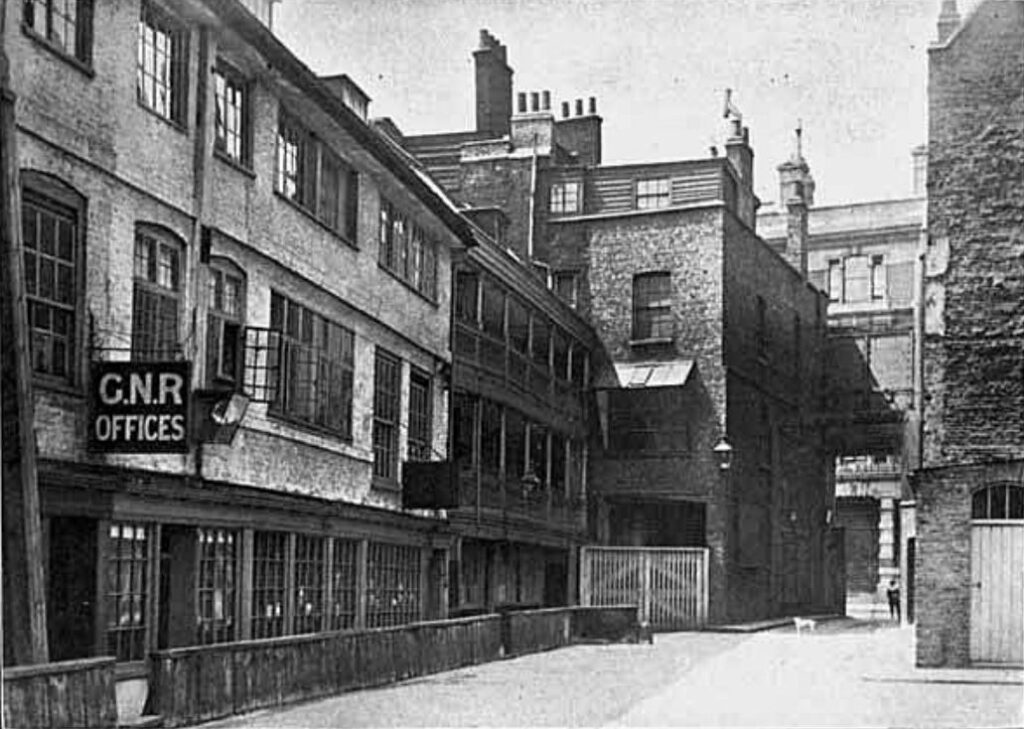
Here it is in 1889 …

We are very fortunate to have The George to remind us of the coaching heyday.
By the way, I have written in a previous blog about the famous Bull & Mouth Inn, the signage for which can still be see in the Museum of London rotunda …
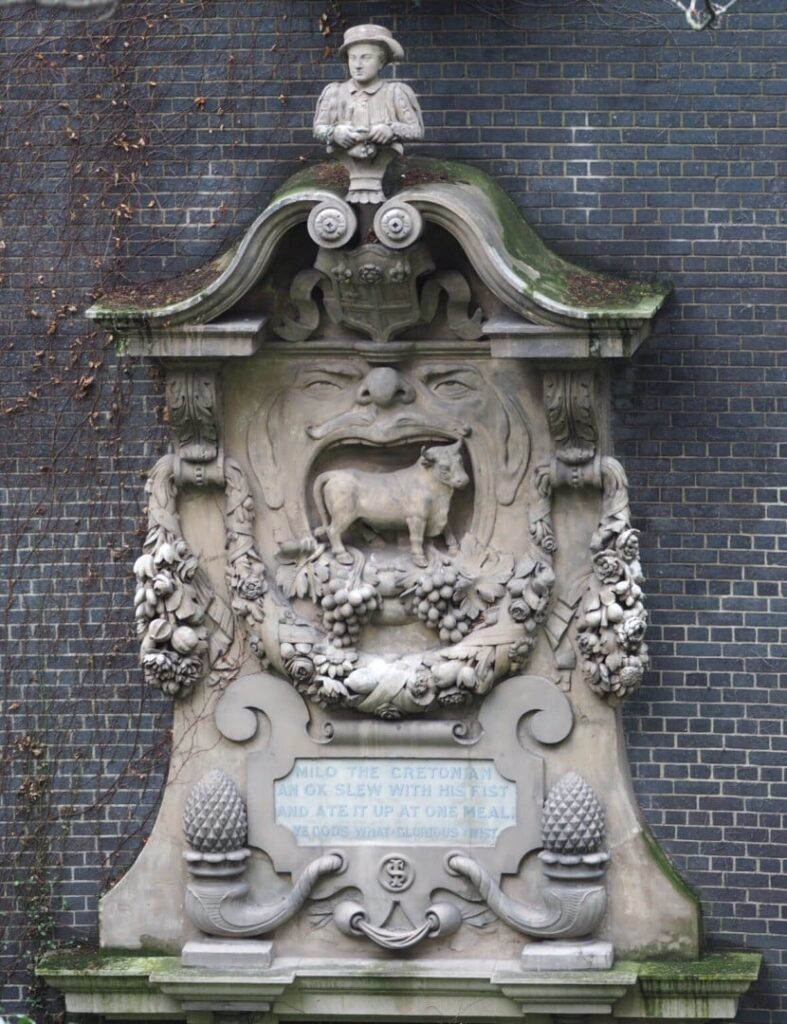
It had stabling for 700, yes 700, horses, most of it underground, and the yard could accommodate 30 coaches. This is a picture of the yard, probably painted around 1820 by H. Shepherd (1793-1864) …

And this is the frontage as painted by John Maggs (1819-1896) …
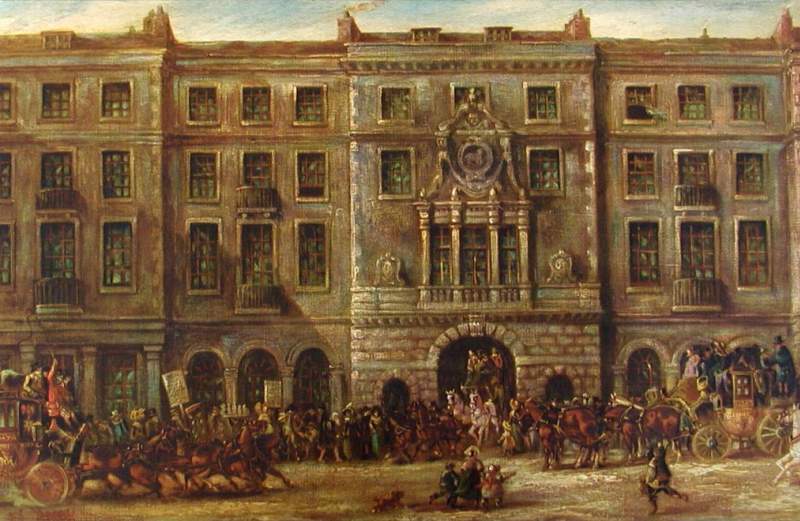
The inn was extensively remodelled and rebuilt in 1830 and became the Queen’s Hotel, the old sign being reattached to the new building. The hotel itself was demolished in 1888 to make way for the new General Post Office which now displays this plaque …
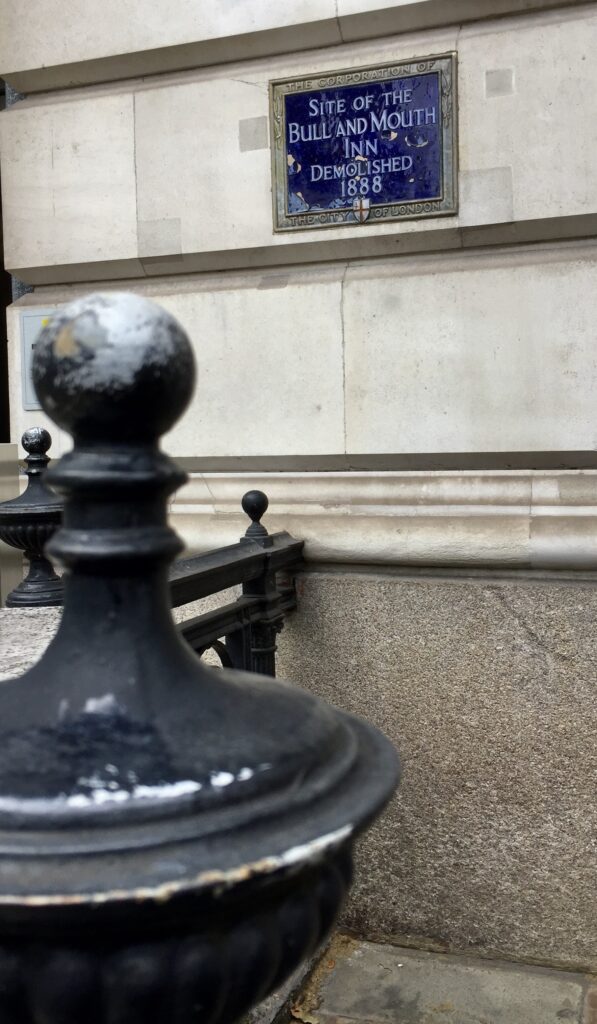
I hope to write about more pubs and their history over the coming weeks.
As is often the case, I am indebted to two fellow bloggers for much of my research. The London Inheritance blog is absolutely superb on the history of The George and The Gentle Author writes as lyrically as usual about the Hoop and Grapes.
If you would like to follow me on Instagram here is the link …
